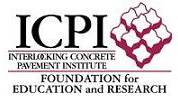Block Paving in the USA
The 8th International Conference on Concrete Block Paving took place in San Francisco, California, USA last week, and the event benefited from the presence of several Irish and British manufacturers, academics and contractors. The theme of the conference was "Sustainability", and while this was a prominent subject throughout the three days of papers and presentations, there were times when it did seem tangential, at best, while at others it was overdone to the point of monotony.
Monday:
The first day, Monday November 6th, was heavily dominated by the eminently listenable Dr Steve Coupe presenting his Formpave -sponsored research into the use of specialist geotextiles to decontaminate surface water as it enters a permeable pavement system (PPS). While the efficacy of the geotextile system is widely accepted, many delegates felt that the case for the inclusion of a geotextile at the interface of the laying course and the base/sub-base was more controversial and remains unproven. In fact, this became the key topic of discussion during the breaks.
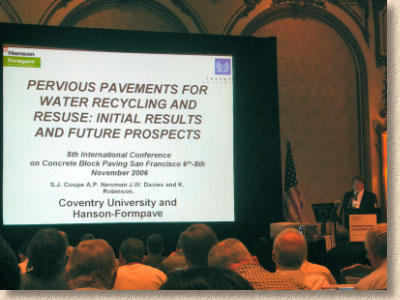
While Dr Coupe's work, and the support he has received over the years from Formpave (now owned and badged as part of the worldwide Hanson Group), is well respected and worthy, the decision by the conference organisers to ask Steve to present a total of seven papers during the day defies logic, and was probably counter-productive. Perhaps it would have been better to allocate one of the 90 minute session to geotextiles in particular, or to offer Formpave Hanson (or is it Hanson Formpave?) a special 45-minute half-session to make their case, but the general discussion during the coffee break and in the bar at the end of the day was that there had been too much from one source.
Other papers during the day included a succinct and lucid overview of PPS developments in Ireland from Tobermore 's Craig McBride that was balanced and informative, providing a valuable insight of how the market is developing and how Tobermore have worked with retailers, engineers and contractors to produce a viable system that is working and attracting a deal of attention from government and developers.
Contributions from the US, Canada, Japan, The Netherlands, Belgium, Germany and Spain, along with informative and superbly-presented papers from the academic heavyweights, John Knapton (lately of Newcastle University) and Brian Shackel from the University of New South Wales created a real international feel. The papers on Water Retaining Pavers (WRP) and their use in cooling the so-called “Heat Island” in the centre of Japanese cities was, for me at least, fascinating, but repeated cock-ups with the slide show set-up marred what should have been a key area of discussion.
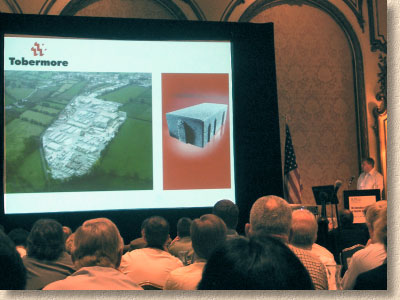
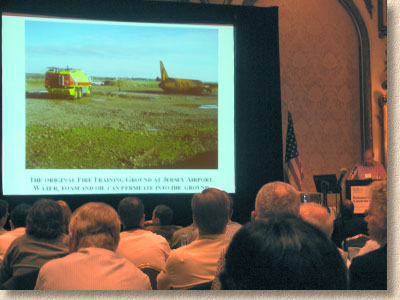
Somewhat perversely at a conference with "Concrete Block Paving" in the title, the highpoint of the day was the presentation from a clay paver manufacturer. Ian Cook, Technical Manager at Blockleys , entertained us hugely with his review of the fire and emergency services training facility at Jersey Airport in the Channel Islands. The video footage showing a hi-vis bedecked safety official legging it out of the way of a careering fire tender had the whole hall in tears of laughter.
Tuesday:
Day Two – and I wondered whether I was a glutton for punishment. Another early start and a long day of technical papers that took a certain amount of determination to endure. In my notebook, the same phrase appears several times: “Stating the bleeding obvious”. Do we really need research that claims to show that a reinforced geotextile is stronger than an un-reinforced geotextile or that thicker sub-bases create stronger pavements? At first glance, this does not appear to move the industry forward, but it was suggested to me that these papers were included for the benefit of those delegates from the US where the industry is less mature, and that “facts” we Europeans take for granted may not be fully understood in this emerging market.
The afternoon improved with a clear and concise assessment of whole-life costings for CBPs from Interpave 's General Manager, John Howe, who claimed he would present the most boring paper of the entire conference, but actually fell a long way short of that dubious honour. Next, an insight into the longevity of Australia's oldest installation from Brian Shackel, followed by a fascinating but all-too-short session on education and training, with Dr. Susan Tighe explaining how the ICPI is promoting education in North America, and Nicolaas van Dieman from Holmesglen Institute for Training and Further Education (TAFE) in Australia revealing how they are ensuring a higher skill standard amongst their contractors by providing a 47-hour course that is studied during evenings and weekends over a number of weeks.
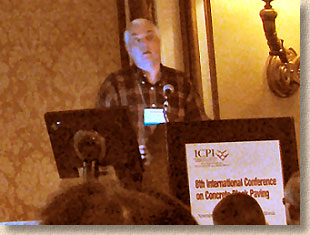

Allan Dowson, once of Marshalls but now in private practice, gave an overview of the recent changes to the main British Standard covering pavement design and construction, the insomnia-curing BS 7533 in all its various parts. He also managed to make a few digs at “colonials” that were, by and large, taken light-heartedly, but inevitably provoked ripostes from certain Antipodean representatives.
Wednesday:
8am start yet again. Why? Give me quality rather than quantity, please!
Anyway, a good first session looking at innovation. Josef Ott from Rampf Moulds intrigued us with new developments in mould technology that is claimed to improve block consistency, only for his presentation to be somewhat devalued by patently planted and pre-arranged questions from his co-author. The ever-entertaining John Emery, yet another UK-based private consultant, unveiled his Innovative Paver System (IPS) that uses a sort of tongue-and-groove arrangement on the vertical edges of the blocks to create enhanced interlock for high-stress applications. This was closely followed by a report on a cunning vertically interlocking double-decker block system being developed by the US Army Corps of Engineers for rapid paving with tank-carrying capability. Next, another John Emery inspired development this time presented by Michael Lazar of Acme Paving Consultants in Singapore, who impressed with a highly visual presentation of reflective blocks and a fascinating reflective directional kerb system that has already attracted attention from several well-known names amongst British manufacturers. Sadly, the final presentation of the session was completely lost on me. Although I had little difficulty in understanding Masao Inuzuka's Japanese inflected English, I completely failed to understand just what the bloody hell he was doing fixing bits of car tyres to the tops of blocks. It must make sense to someone…mustn't it??
The next session featured the best comedy line of the conference from Tolly Paving MD, Terry Pointer, who had all but lost his voice due to a throat infection but soldiered on bravely, with the help of Mark Bushell from Pavement Solutions Ltd ., and managed to have a dig at the fees charged by US doctors. Their joint presentation concentrated on how machine-lay techniques could be, and are being, improved by monitoring and an attention to detail promoted by UKPEG, the United Kingdom Paving Expert Group. Next, VMS from the Netherlands discussed Health and Safety changes in their country and the implications of this on machine-lay technology, finishing off with a screening of the robotic block layer video posted to this site a couple of weeks ago.
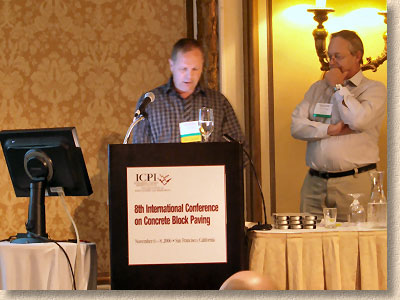
Then, the return of Allen Dowson to continue the colonial baiting and present a case study review of a rigid reclaimed CBP project in Ripon, North Yorkshire, which made much use of the newly-hatched part 12 of BS7533. Although the construction technique was well-explained, I could not make sense of the underlying economics that relied on using a very expensive proprietary mortar to allow a certain well-known tumbled CBP to be lifted and re-laid. A quick 'back-of-an-envelope' calculation suggests that the mortar costs about twice as much as would new blocks!

Leading up to lunch, and as a foretaste of the trip to the Port of Oakland scheduled for the following morning, the first of two sessions dedicated to Port and Industrial Pavements was kicked off by John Knapton with a review of the use of CBPs at container storage areas within ports, followed by reports on experiences in Sweden, Africa and Israel. On the other side of the lunch break, reports from Rotterdam and then from Dundalk (pronounced Dun Dolc, apparently) in the USA. This was followed by what was to be declared “best paper in conference”, a report on pull-out tests conducted on CBPs at Israeli airfields by Ilan Ishai – not my personal “best paper” but sound, solid and much-needed research nonetheless.
Sticking with airports, Wigan's very own John Cook, representing the British Ministry of Defence gave what was, for me, a fascinating insight into how they have been detailing their block pavements to minimise and/or eliminate the potential for loose blocks and “FOD” (Foreign Object Damage) to the very expensive 'planes in their charge. Claudia Yun Kang, now with Risi Stone Systems in Canada, updated us on the performance of CBPs at Hong Kong airport and the Yantian Container Terminal, and the session was rounded off by the personable Gille Wilbanks, a US consulting engineer, looking at the development of standards for CBPs in North American ports and an introduction from Gerald Serventi to the work ongoing at his employer, the Port of Oakland.
The final session of the three days featured a report on an assessment of the effect of block chamfers on the level of vibration endured by wheelchair users, a look at how Small Element Paving (SEP) has been used to revitalise parts of Amsterdam, plus two superb presentations from German Madrid (pronounced Herman) on the use of CBPs on different projects in his region of Colombia. The honour of the final presentation went to ICPI leading light David R. Smith who wanted to convince us that there is a hidden language within the aesthetic design and use of CBP colours, shapes and textures. It was a visual treat to see so many stunning designs, but I need a bit more convincing that stack bond patterns can be equated with nouns.
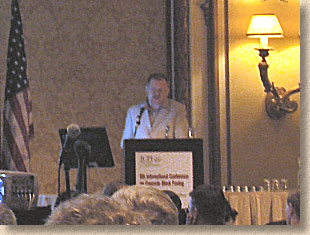
Wednesday night was given over to the customary “Big Dinner” which consisted of dock leaves, raw meat, and uncooked mystery veg followed by a live band that seemed to believe their mission was to pierce eardrums rather than entertain. It was notable that a large proportion of the British and Irish contingent, with representatives from Charcon, Marshalls, Acheson-Glover and Gibson Contracts, retired to the bar, where their aural systems where under less of a threat from the permanently scowling and professionally rude barman who rejoiced in the name of “Happy” Norman.
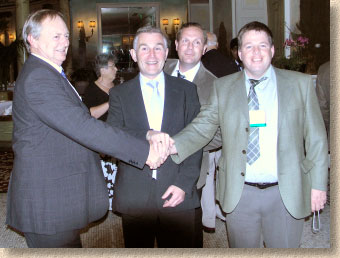

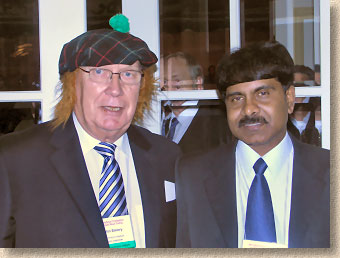
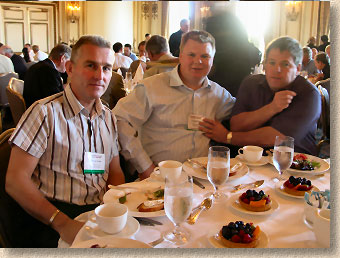
A trip downtown to a bar where they didn't object to customers expecting a drink and service with a smile, several further glasses of beer, and less than four hours kip is probably not the best preparation for the 7:45am start of the tour to the Port of Oakland, touted as the largest installation of CBPs in North America, and at 500,000 square metres, it's pretty impressive, but I struggled through and was glad that I did, because it's a rare treat to be given access to such a large site and to be invited to watch an ongoing installation of such a scale.


Conclusions:
So, in line with many of the presentations, I should round off with my conclusions.
Overall, I have reservations regarding the true value of this event. It cost me somewhere around three thousand pounds (€4,800/US$5,900) to get there, stay there, and attend the 15 sessions over three days plus the tour to the Port of Oakland. I've learned a lot, and made some potentially useful contacts, but my overriding impression is that the networking is of greater importance that the actual papers being presented.
I was saddened that many of the US-based exhibitors and manufacturers, who were there in large numbers, were totally uninterested in anyone not from North America, ie, persons unlikely to be in a position to buy from them. I'm not alone in this view: it was echoed by several other British, Irish and European delegates – I did try to ask a couple of Japanese attendees for their opinion but sadly the language barrier proved too much – and there was a sense that the wider US-Canadian clique were much happier talking amongst themselves. There were exceptions; of course there were, but I would have preferred a more internationalist, open-minded willingness to exchange experiences to the starchy, different-coloured-uniform-for-each-day sales schmooze that pervaded the coffee breaks and end-of-day discussions.
The organisation of the event was at times mysterious. Time after time after time the slides were moved forward too quickly, or lost, or the wrong presentation was put up. Why could the presenters not be trusted to control their own presentations? Most of us are more than familiar with PowerPoint, so why was control handed over to a third party that was, by definition, unfamiliar with each presentation? Why did Monday's papers rely so heavily on one presenter, why were so many of the Japanese authors clumped together into a couple of sessions, and why were the Iranian delegates absent? Should the US political obsession with certain countries and the nationwide paranoia regarding anyone from the Muslim Middle East be allowed to dictate who can and who can't present academic papers at an international conference?[*] And why the need to start at 8am? As I've already stated, I prefer quality to quantity, and my poor old brain is not really geared for biochemistry or finite element analysis at that time of the morning. And why did the twonk in the room upstairs from me have to get up at five each morning and spend an hour and half in the shower?
[*] Since first uploading this review, I've had an email from Charles A. McGrath, Executive Director of the Interlocking Concrete Pavement Institute, stating that it was the author's decision not to attend.
I'm absolutely certain that the organisers worked hard and I don't want to denigrate their undoubted efforts, but at these events, it's the little personal touches that make the difference, and myself and a majority of the people to whom I spoke felt that many of the little personal touches were absent.
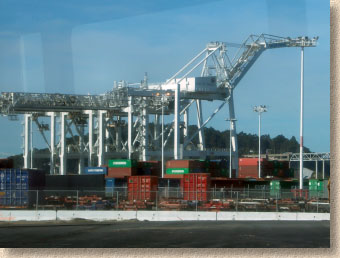
Most worryingly, a whole section of the paving industry was missing. Plenty of manufacturers, and a generous helping of academics, but where were the contractors? I wanted to exchange experiences with those installing CBPs in other countries, continents and climates, but they were few and very, very far between. If this conference is to be more than a 'talking shop', then it needs to have input from contractors. We're the guys responsible for laying the paving: without us, the manufacturers would have no customers and the academics would be left to hypothesise and surmise on fresh air, yet we were largely absent from what is the key international event for the CBP industry.
Brickbat:
As for the venue: lovely to look at from both inside and out, but pricey and an appallingly poor standard of service.
For £120 per night, I don't want some miserable git of a barman lecturing me on how busy he is, or to be told that I can't have a drink after 11:30 at night. I don't want to hear what's happening in the adjacent rooms and I don't want to be repeatedly woken by the noise of water hammer in the plumbing. There were no tea/coffee making facilities in the room, but there was an unappetising US$30 breakfast that Little Chef would be ashamed to put before you. I also heard horror stories regarding a non-existent Room Service, lost baggage, rudeness bordering on racism, and an embarrassing personal intrusion by cleaning staff. I would love to return to San Francisco at some time, it is a truly wonderful city that charmed and delighted me beyond my expectations, but on that next visit, I will definitely not be staying at the Fairmont.
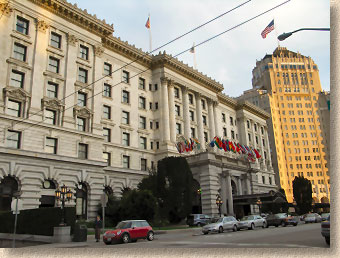
The future:
Value for money? Only time will tell. For now, my family face a low-key, under-funded Christmas that I will struggle to justify. While the networking opportunities were definitely “Premier League” standard, and an acceptable number of the eighty-odd papers were interesting, I had expected to see more delegates from Britain and Europe. Ireland's “Big Three” manufacturers (Roadstone, Tobermore and Acheson-Glover) all managed to have a presence, so where were Cemex and Brett? Why so little representation from European manufacturers? And where were the contractors? Credit must go to Terry Pointer and Freddie Gibson for putting their hands into their own pocket to represent Britain and Ireland in this sector, but maybe there is a case for the manufacturers to sponsor a few of the smaller contractors and give them the opportunity to share their undoubted knowledge and experience with the wider world.
I will have to think long and hard before committing to the 2009 conference in Buenos Aires. Newcastle (upon Tyne) in 2012 could be a possibility, though, if I start saving now!


